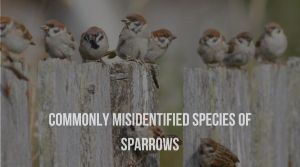In Indian Culture
In Indian culture and literature, the sparrow bird has been an integral part of folklore, mythology, and poetry for centuries. The sparrow has been revered as a symbol of love, devotion, and companionship, and its significance can be found in many Indian texts, including the Ramayana, Mahabharata, and various Sanskrit scriptures. In this blog, we will explore the sparrow’s symbolism in Indian culture and literature, its significance in Indian mythology, and the efforts being made to protect this beloved bird.
The Sparrow in Indian Mythology
In Indian mythology, the sparrow bird is associated with love and devotion. In the Ramayana, the story of Lord Rama and Sita is a classic example of the sparrow’s significance in Indian mythology. It is believed that when Rama and Sita were banished from their kingdom, they spent their time in the forest. One day, Sita saw a sparrow being attacked by a hawk and asked Rama to save it. Rama shot an arrow, saving the sparrow and demonstrating his devotion to Sita. The sparrow’s symbolism of love and companionship is also seen in the story of Radha and Krishna, where the sparrow represents Radha’s longing for Krishna.
The Sparrow in Indian Poetry
In Indian poetry, the sparrow is a popular subject, with poets using the bird to represent various emotions and themes. One famous poem that uses the sparrow as a symbol is the Bengali poet Rabindranath Tagore’s “Sparrows.” In this poem, Tagore describes the sparrow as a symbol of hope and resilience, suggesting that even though the sparrow is small and seemingly insignificant, it still has the power to overcome adversity.
The Sparrow in Indian Culture
In Indian culture, the sparrow has been revered as a symbol of love, companionship, and devotion. One famous story in Indian folklore is the tale of the sparrows, which is similar to the Scottish legend mentioned below. In this story, a sparrow helps a poor farmer build a house in exchange for a hole in the roof, where it can build its nest. The sparrow’s presence in the house brings good luck and prosperity to the farmer, demonstrating the bird’s significance in Indian culture.
Representation of Sparrow bird in folklore, poetry, and religion
The Sparrow in Folklore
Sparrows have been a part of folklore for centuries, often serving as symbols of love, loyalty, and friendship. One such story is the tale of the “Leather House,” a Scottish legend that tells the story of a group of sparrows who helped a man build a house in exchange for his promise to leave a hole in the roof. This hole provided the sparrows with a safe place to nest and raise their young, and in return, they brought the man good luck and prosperity.
The Sparrow in Poetry
The sparrow has also been a popular subject in poetry, with poets using the bird to represent various themes such as freedom, love, and the transience of life. One famous poem that uses the sparrow as a symbol is Emily Dickinson’s “Hope is the thing with feathers.” In this poem, Dickinson compares hope to a sparrow, suggesting that it is small but powerful and that it can carry us through difficult times.
The Sparrow in Religion
Sparrows have also been significant in religious contexts. In Christianity, sparrows are often mentioned in the Bible as a symbol of God’s love and care for all creatures, no matter how small. In Matthew 10:29-31, Jesus says, “Are not two sparrows sold for a penny? Yet not one of them will fall to the ground outside your Father’s care.” This verse suggests that even though sparrows are small and seemingly insignificant, they are still valuable to God.
Bird House for Sparrow
Despite the sparrow’s cultural significance, their population has been in decline in recent years due to changes in land use, urbanisation, and the use of pesticides. To help protect this beloved bird, individuals can provide them with safe spaces to nest and raise their young. One way to do this is by installing bird houses specifically designed for sparrows.
A sparrow bird house should be made with specific dimensions to ensure the safety and comfort of these small birds. The entrance hole should be 1 1/8 inches in diameter, and the interior of the house should be at least 6 inches tall, 4 inches wide, and 6 inches deep. These dimensions will accommodate the nesting habits of sparrows, who prefer to build their nests in cavities.
Conclusion
In conclusion, the sparrow is a beloved bird that has played an important role in culture and literature for centuries. Its symbolism has been used to represent themes such as love, loyalty, and hope, and it has been significant in religious contexts as a symbol of God’s care for all creatures. Despite its widespread popularity, the sparrow’s population has been in decline in recent years, making it more important than ever to protect and provide safe spaces for these small birds to thrive. By installing bird houses designed specifically for sparrows, we can help ensure their continued presence in our communities and our cultural consciousness.

